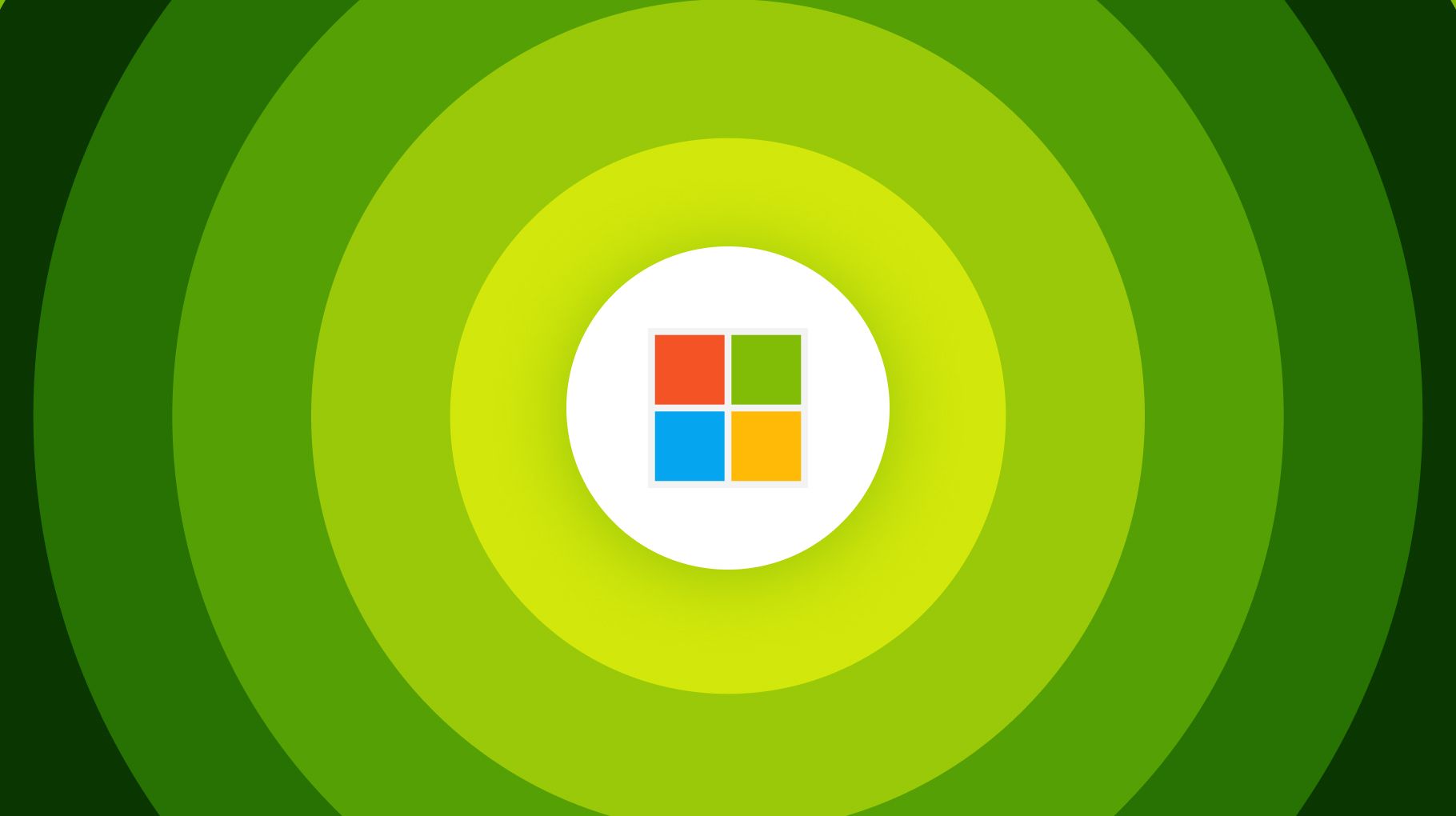Microsoft Revenue and Growth Statistics (2024)

Some amazing facts about Microsoft
- Microsoft is a top tech company with a 21% market share worldwide.
- In April 2023, Microsoft’s market cap reached $2.254 trillion, showing its industry dominance.
- In FY2022, Microsoft was valued at $1.7 trillion, a 29.10% drop from its peak of $2.4 trillion in 2021.
- In 2022, Microsoft’s brand value exceeded $611 billion and became a leading global brand.
- Microsoft’s global revenue rose by 18% from 2021 to 2022, with sales increasing from $168.09 billion to $198.27 billion, setting a new record.
- In recent years, Microsoft’s revenue has climbed steadily, peaking at a record $72.74 billion in 2022.
Microsoft Overview
Microsoft at a glance
Microsoft holds a considerable 21% share in the global tech industry. As of April 2023, Microsoft’s market cap is $2.254 trillion, but it has dropped 29.10% from its peak of $2.4 trillion in 2021.
Despite this, its valuation remains higher than most of its competitors. In 2022, Microsoft’s brand value increased by 49% from the previous year to $611 billion. Over the past decade, Microsoft’s revenue has been steadily increasing, with a global year-on-year revenue growth of 18% between 2021 and 2022.
In 2023, Microsoft earned $102.87 billion in revenue. Microsoft’s productivity and business processes segment includes Office, Dynamics, and LinkedIn. Its sales and marketing expenses reached $21.83 billion in 2022, the highest annual figure to date. Microsoft currently employs about 221,000 full-time workers globally, with 60% working in the United States.
Its workforce is divided into operations, research and development, sales and marketing, and general administration units. Microsoft has been consistently increasing its number of full-time employees from 61,000 in 2005 to 221,000 in 2022.
What is the market share of Microsoft in the technology industry?
Microsoft is one of the top five companies in the tech market, holding about 21% of the market share across various regions around the world.
Source: Statista
Microsoft Market Cap
As of April 2023, Microsoft commands a market cap of $2.254 trillion, demonstrating its impressive standing in the industry.
Source: Companies Market Cap
Microsoft Valuation
As of FY2022, Microsoft’s valuation stood at $1.7 trillion, reflecting a decline of 29.10% from its all-time high of $2.4 trillion in 2021.
Despite the recent decrease, Microsoft remains a formidable player in the tech industry with a valuation that surpasses most of its competitors.
Source: Morning Star
Microsoft Brand Valuation
Microsoft’s brand value has been consistently on the rise and, in 2022, it soared past $611 billion, making it a leading global brand.
The company’s brand value has surged by approximately 49% compared to the prior year, underscoring its strong growth and enduring success in the technology sector.
Source: Statista
Mircosoft Revenue
Microsoft has shown strong performance in the technology industry, with its annual revenue consistently increasing over the past decade.
Between 2021 and 2022, Microsoft achieved remarkable global revenue growth of around 18% year-on-year. This impressive feat highlights another record-setting year for the software giant in terms of sales revenue, which grew from $168.09 billion in 2021 to $198.27 billion in 2022.
Source: Microsoft, Statista, Statista
Microsoft productivity and business processes revenue
Microsoft’s productivity and business processes segment includes Office, Dynamics, and LinkedIn.
This segment has consistently generated high revenue, with $33.47 billion in the first half of 2023, $63.33 billion in 2022, and $53.91 billion in 2021. In the same way, the revenue for this segment in 2020, 2019, and 2018 was $46.4 billion, $41.16 billion, and $35.86 billion, respectively.
These numbers are a testament to the popularity and success of Microsoft’s productivity and business processes products and services.
Source: Statista
Microsoft intelligent cloud segment revenue
Microsoft’s Intelligent Cloud segment comprises various cloud services, such as Azure, Windows Server, SQL Server, and GitHub, which have significantly contributed to the company’s revenue.
In 2023, this segment generated $41.83 billion in the first half and $75.29 billion in 2022. In 2021, it generated $60 billion. The revenue for this segment in 2020, 2019, and 2018 was $44.45 billion, $38.99 billion, and $32.23 billion, respectively.
The increase in revenue over the years is evidence of the growing demand for cloud services and Microsoft’s strong market position.
Source: Statista
Microsoft Personal Computing Revenue
The Personal Computing segment consists of products such as Windows, Surface, and gaming consoles.
The revenue for this segment has varied over time, with the highest revenue of $59.66 billion being recorded in 2022.
Source: Statista
Overview of Microsoft’s revenue from other products and services
In 2022, Microsoft earned more than 198 billion U.S. dollars from external customers. The largest share of this revenue, at around 67.3 billion U.S. dollars, came from server products and cloud services.
Office products and cloud services were also significant contributors, accounting for close to 45 billion U.S. dollars. Microsoft’s other offerings, such as Windows, gaming, LinkedIn, search advertising, devices, and enterprise services, also generated considerable revenue.
The company’s revenue streams have grown consistently over the years, with a notable increase in 2022 compared to previous years.Source: Statista
Source: Statista
Microsoft Income
Over the past several years, Microsoft has experienced a consistent upward trajectory in revenue, culminating in a record-breaking $72.74 billion in 2022.
Source: Statista
Microsoft productivity and business processes income
This particular business segment has consistently generated significant revenue, with $16.5 billion in the first half of 2023, $29.67 billion in 2022, and $24.36 billion in 2021.
In the past three years, revenue for this segment was $18.72 billion in 2020, $16.21 billion in 2019, and $12.93 billion in 2018.
This upward trend in revenue reflects the widespread adoption and achievement of success for Microsoft’s productivity and business process solutions.
Source: Statista
Microsoft intelligent cloud segment income
In recent years, Microsoft’s Intelligent Cloud segment has experienced impressive growth, with 2022 earnings reaching $32.76 billion.
Source: Statista
Microsoft Personal Computing Income
In recent years, Microsoft’s Personal Computing segment has seen a steady increase in revenue, with $20.98 billion generated in 2022.
This growth is mainly due to the strong performance of their Windows operating system and popular gaming products, such as Xbox.
Source: Statista
How Much Does Microsoft Spend on Research and Development?
Microsoft has been increasing its spending on research and development over the past two decades.
In 2022, the company spent $24.5 billion on R&D, marking a significant increase from $20.7 billion in 2021. This consistent investment in research and development is aimed at maintaining Microsoft’s position in the highly competitive technology industry.
Source: Statista
Overview of Microsoft Sales and Marketing Expenses
In the past ten years, Microsoft has consistently increased its spending on sales and marketing. In 2022, the company’s sales and marketing expenses reached their highest annual figure to date, at $21.83 billion.
This represents a significant increase of over six billion U.S. dollars compared to the expenses of a decade ago.
The table below presents Microsoft’s sales and marketing expenses from 2000 to 2022.
Source: Statista
How many people work at Microsoft?
Microsoft, a leading technology company, currently employs approximately 221,000 full-time workers worldwide.
As of 2022, 60% of Microsoft’s workforce is based in the United States. The company divides its employees into four business units: operations, research and development, sales and marketing, and general administration.
Over the past decade, Microsoft has consistently increased its number of full-time employees from 61,000 in 2005 to 221,000 in 2022.
Source: Statista
How does Microsoft make Money?
Microsoft generates revenue from various business segments and products that contribute to its overall financial success.
In 2022, Microsoft generated over 198 billion dollars in total revenue. The majority of this revenue came from the productivity and business processes segment, which generated 63.4 billion dollars, and the intelligent cloud segment, which generated 75.3 billion dollars.
These segments have experienced rapid growth in recent years and have contributed significantly to Microsoft’s success. Microsoft’s revenue is also generated from other segments, including computing and gaming hardware, commercial licensing, and devices and consumer licensing.
Source: Statista
Microsoft Competitors Overview
What is Microsoft’s market value in the software and programming industry?
Microsoft is currently the largest company in the software and programming industry, having achieved the highest net sales from 2017 to 2022. In 2022, Microsoft’s sales revenue reached an impressive $184.9 billion USD, surpassing that of its competitors. This significant increase in sales revenue is a testament to Microsoft’s leadership and innovation in the industry.
In spite of facing strong competition from other companies such as Oracle, SAP, and Salesforce.com, Microsoft’s market share has continued to grow, further cementing its position as the industry leader in software and programming.
Source: Statista
How much has Microsoft spent on expenses in the software and programming industry to maintain its lead?
According to 2020 data, Microsoft is one of the top software companies worldwide, with the highest revenue and total expenses among the listed companies. Its revenue of $143.02 billion and total expenses of $90.06 billion set it apart from its competitors.
Source: Statista
What is the value of Microsoft’s assets and liabilities in the software industry?
In the software industry, Microsoft is a major player, with total assets worth $301.31 billion and liabilities worth $183.01 billion as of 2020.
This puts Microsoft well ahead of other software companies, such as Oracle, whose assets were valued at $115 billion, and Salesforce.com, whose assets were also valued at $66 billion.
Source: Statista
What is Microsoft’s global market share for desktop operating systems?
Microsoft has been the dominant player in the global desktop PC operating system market for many years. As of January 2023, Windows holds a commanding 74.14% market share, with macOS and Linux trailing behind at 15.33% and 2.91%, respectively.
Although Windows has seen a slight decrease in market share from 75.43% in 2020 to 74.74% in 2021, it continues to be the most widely used operating system globally.
Source: Statista
What is Microsoft’s global market share for tablet operating systems?
As of 2022, the Windows operating system held only 11% of the market share, while Android and Apple iOS held 49% and 38% respectively.
These figures indicate a decline in Microsoft’s tablet OS market share since 2016, with a decrease from 15% to 11% in 2022.
Source: Statista
What is Microsoft’s share of the office productivity software market?
As of 2022, Microsoft is a major player in the global market for office productivity software.
One of its most widely used products, Microsoft Office 365, has a market share of 45.46%, making it the second most popular office productivity software in the world. Microsoft PowerPoint, another popular offering from the company, has a market share of 2.44%.
While Google Apps is currently leading the market with a share of 50.34%, Microsoft’s strong position in the office productivity software market cannot be overlooked.
Source: Statista
What is Microsoft’s share of the database market?
As of February 2023, Microsoft SQL Server stands as the third most widely used database management system in the world, earning a ranking score of 929.09 based on popularity, job demand, and community engagement.
Oracle and MySQL stand as the top two most popular database management systems, with ranking scores of 1,247.52 and 1,195.45 respectively. This ranking highlights the significant presence of Microsoft in the database management systems market, a critical component of many organizations’ IT infrastructure.
The popularity of Microsoft SQL Server can be attributed to its robust features, ease of use, and integration with other Microsoft products such as the .NET framework, Azure cloud services, and Microsoft Excel.
Source: Statista
What is Microsoft’s revenue share in console gaming?
In the fiscal year 2022, it was expected that Microsoft would earn $6.3 billion in revenue from console gaming.
It is projected that by 2025, Microsoft will generate $8.6 billion in revenue from console gaming.
Source: Statista
Which Microsoft apps do users download the most?
In 2022, Microsoft Teams was the most popular with nearly 31 million downloads from global users.
Despite the Office Suite apps often being pre-installed on Android and iOS phones, Microsoft Word ranked second with 18.2 million downloads onto mobile devices worldwide.
Following closely was the email application, Outlook, with 16.5 million downloads in the examined period.
Source: Statista
Who founded Microsoft?
On April 4, 1975, Bill Gates and Paul Allen founded Microsoft in Albuquerque, New Mexico, to create software for the Altair 8800. By 1979, Microsoft had moved to Washington State and made more than $1 million in sales.
Gates became the world’s youngest billionaire in 1987, a year after Microsoft went public. In 1981, IBM licensed Microsoft’s MS-DOS operating system for its first personal computer. Windows, with a graphical user interface, was released in 1985. In 1995, Windows 95 was launched and sold 7 million copies in the first five weeks.
Internet Explorer was introduced in 1995, and in 2001, Microsoft settled with the U.S. Department of Justice and 20 state attorneys general for violating antitrust laws. That same year, Microsoft launched its Xbox gaming console.
Source: History
Microsoft founders’ net worth
- Bill Gates
Bill Gates, Microsoft’s co-founder, has diversified into zero-carbon energy and other investments. Despite his recent divorce from Melinda Gates, they continue to co-chair the Gates Foundation.
Gates transferred over $6 billion worth of shares to Melinda as part of the settlement.
He owns 1.3% of Microsoft’s shares and has invested in many other companies, including Republic Services and Deere & Co. Gates is also one of the largest owners of farmland in the U.S.
He has donated over $59 billion to the Gates Foundation, with most of his early donations being in the form of Microsoft stock.
Source: Forbes
- Paul Allen
Paul Allen, the co-founder of Microsoft with Bill Gates, passed away at the age of 65 on October 15, 2018.
He stepped down from Microsoft 8 years after co-founding the company in 1975 due to Hodgkin’s disease.
Allen was also the owner of the Portland Trail Blazers, the Seattle Seahawks, and the Seattle Sounders, and he generously donated over $2 billion to various causes, including $500 million to his Allen Institute for Brain Science.
Source: Forbes








